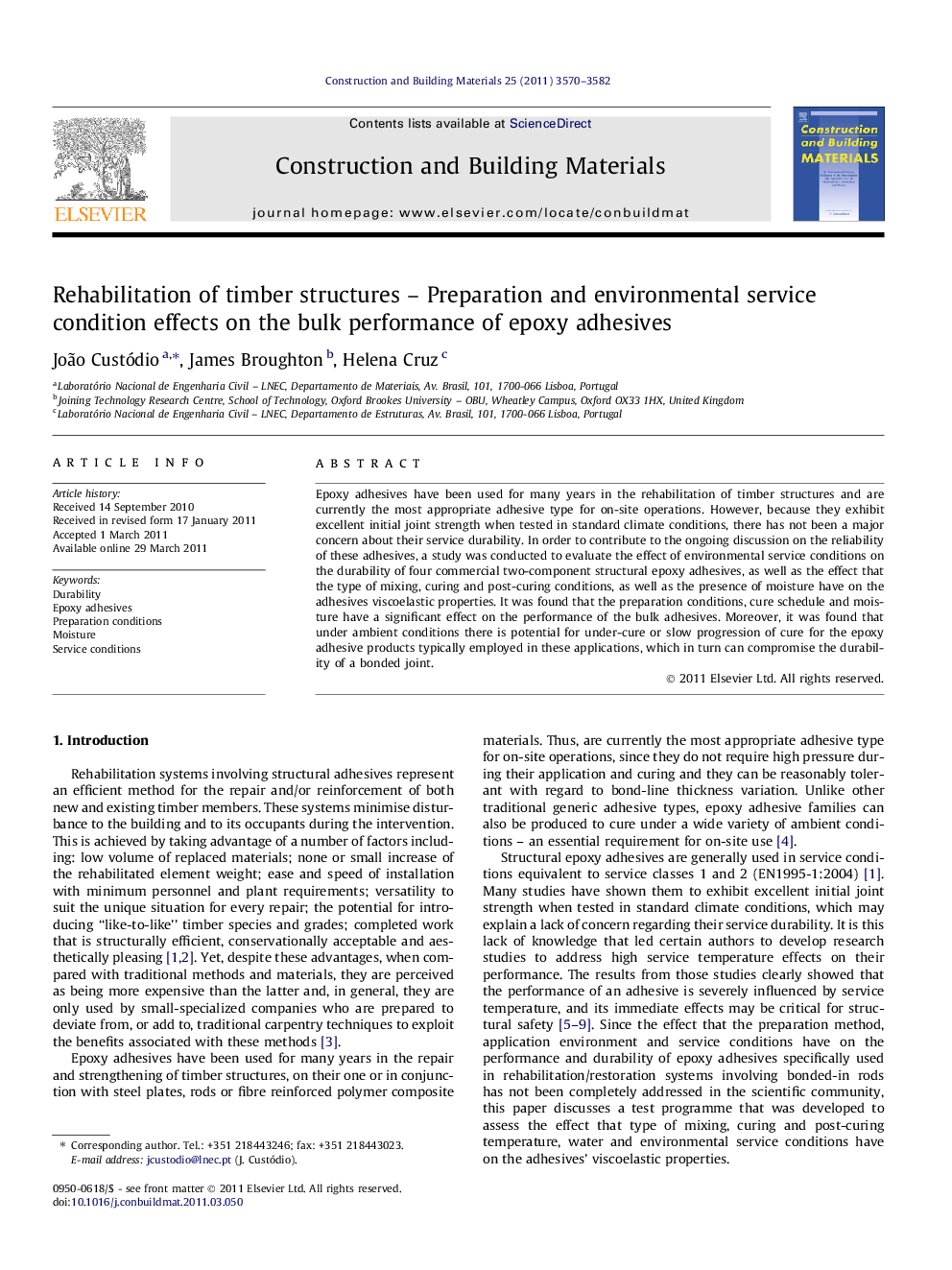| Article ID | Journal | Published Year | Pages | File Type |
|---|---|---|---|---|
| 259839 | Construction and Building Materials | 2011 | 13 Pages |
Epoxy adhesives have been used for many years in the rehabilitation of timber structures and are currently the most appropriate adhesive type for on-site operations. However, because they exhibit excellent initial joint strength when tested in standard climate conditions, there has not been a major concern about their service durability. In order to contribute to the ongoing discussion on the reliability of these adhesives, a study was conducted to evaluate the effect of environmental service conditions on the durability of four commercial two-component structural epoxy adhesives, as well as the effect that the type of mixing, curing and post-curing conditions, as well as the presence of moisture have on the adhesives viscoelastic properties. It was found that the preparation conditions, cure schedule and moisture have a significant effect on the performance of the bulk adhesives. Moreover, it was found that under ambient conditions there is potential for under-cure or slow progression of cure for the epoxy adhesive products typically employed in these applications, which in turn can compromise the durability of a bonded joint.
► Four epoxy adhesives used in the rehabilitation of timber structures were studied. ► Mixing, curing, post-curing and moisture conditions all affected adhesive performance. ► Potential for under-cure or slow progression of cure exists for ambient conditions. ► The above factors can compromise bonded joint durability in these applications.
